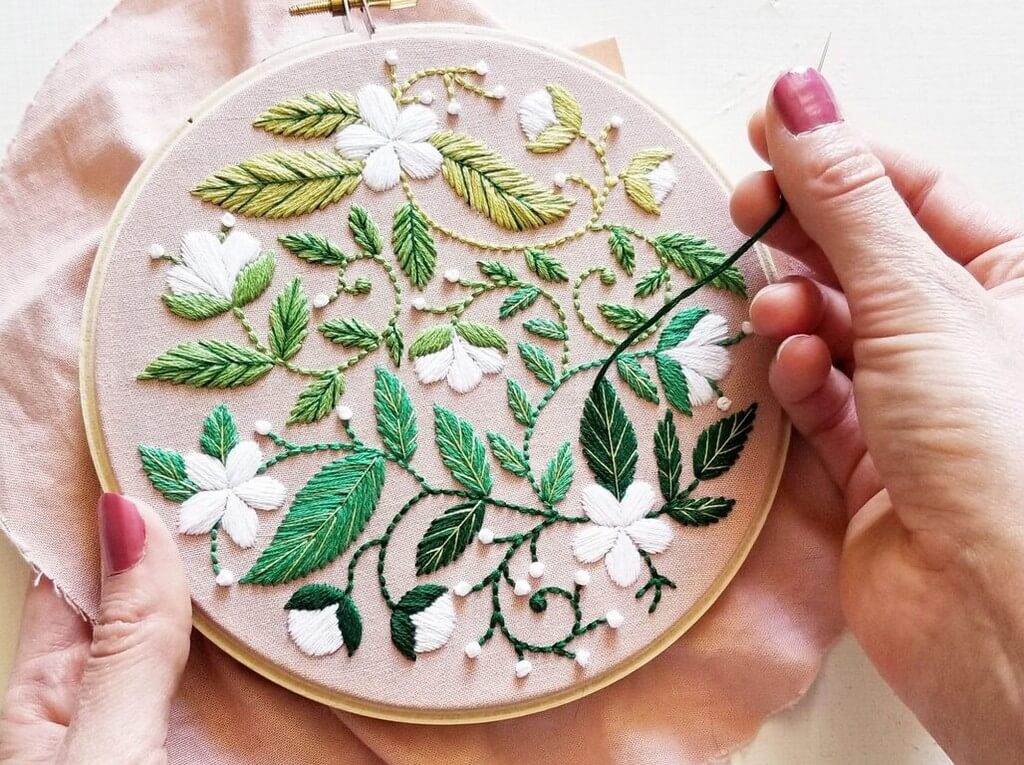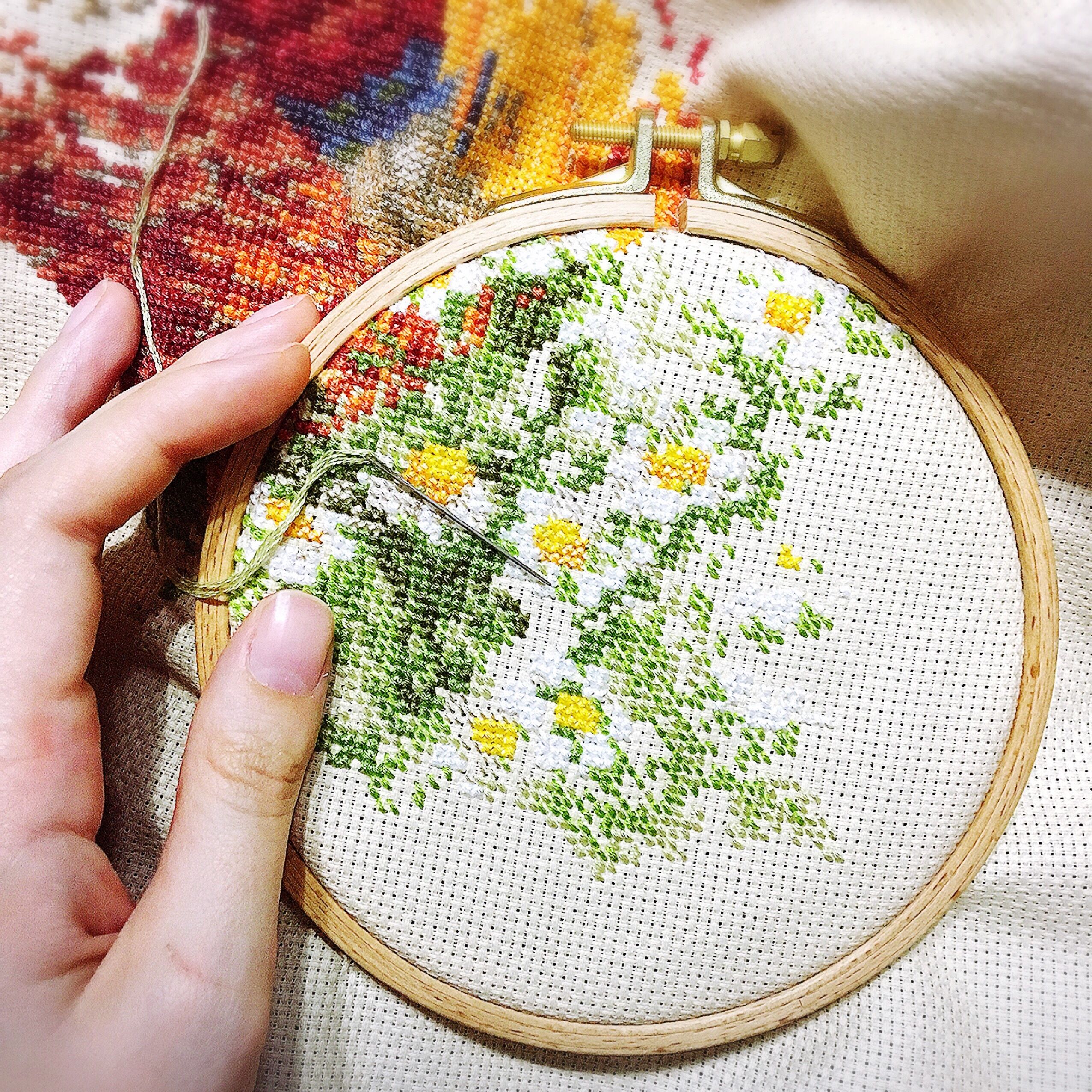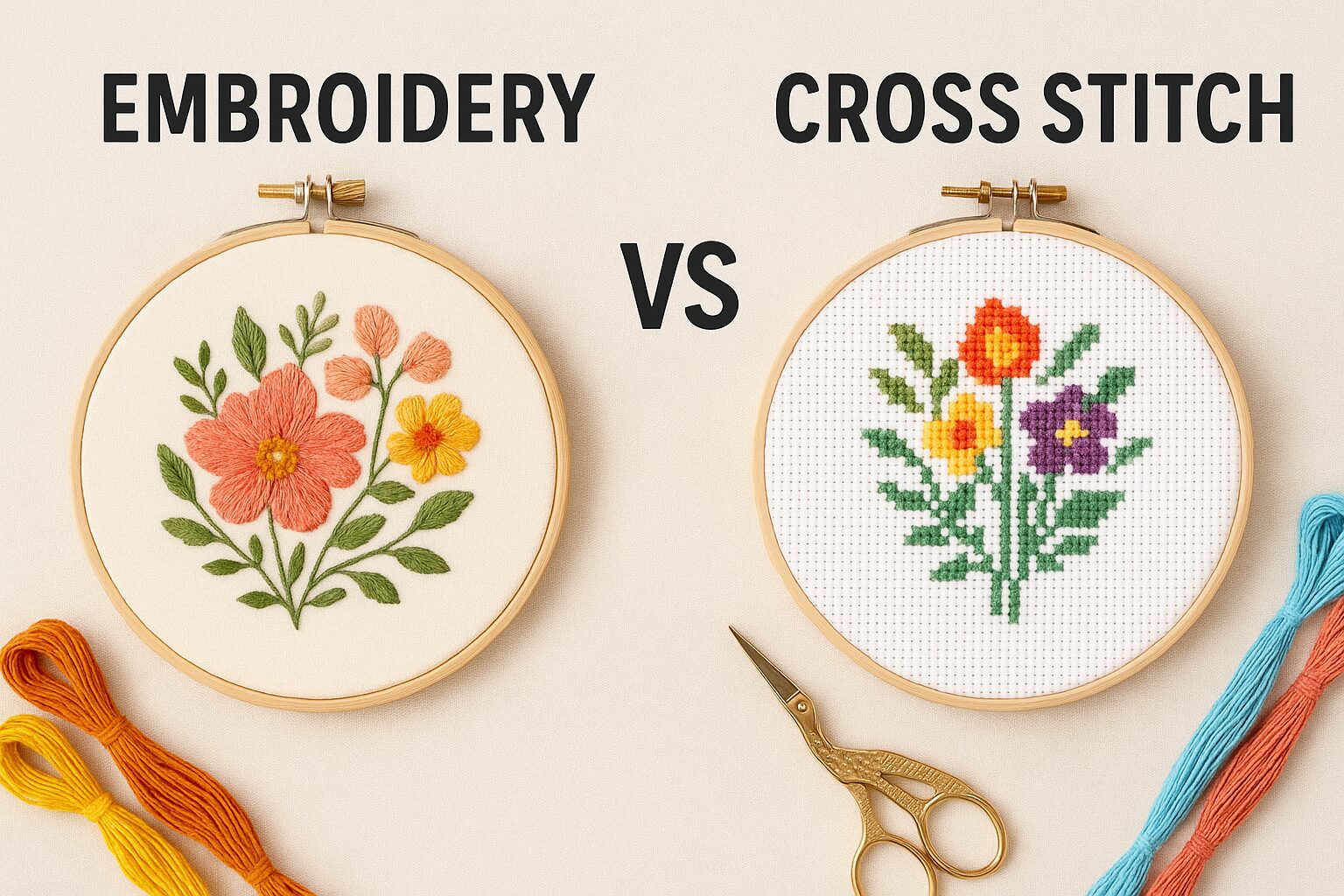Embroidery and cross stitch are two of the most rewarding and accessible forms of needlecraft. While both involve needle, thread, and fabric, each has its own techniques, structure, and creative outcomes. Understanding the differences between the two crafts helps you choose the right starting point – or enjoy both depending on your goals.
This guide explains each craft in depth, covering tools, techniques, difficulty levels, creative applications, and practical considerations for hobbyists at all skill levels.
Page Contents
- 0.1 1. What Is Embroidery?
- 0.2 2. What Is Cross Stitch?
- 0.3 3. Key Differences Between Embroidery and Cross Stitch
- 0.4 Is cross stitch or embroidery easier?
- 0.5 4. Tools and Materials
- 0.6 5. Skill Levels and Learning Curve
- 0.7 6. Creative Applications and Styles
- 0.8 7. Time, Cost, and Practical Considerations
- 0.9 8. Choosing the Right Craft
- 0.10 9. Step-by-Step Guide for Beginners
- 0.11 10. Common Mistakes and Solutions
- 0.12 Embroidery Mistakes:
- 0.13 Cross Stitch Mistakes:
- 1 11. Conclusion
1. What Is Embroidery?

Embroidery is the art of decorating fabric with needle and thread. It allows for both freehand creativity and guided patterns. The craft can range from simple outlining stitches to intricate, textured designs.
History and Common Techniques
Surface Embroidery: Decorative patterns stitched on the fabric surface.
Crewel Embroidery: Uses wool threads to create bold, textured designs.
Satin Stitch: Smooth, filled shapes with parallel stitches.
French Knot: Small, raised knots that add texture.
Embroidery offers flexibility in design, color, and texture, making it suitable for both beginners and advanced hobbyists.
2. What Is Cross Stitch?

Cross stitch is a type of counted-thread embroidery where small X-shaped stitches form a pattern on a grid. The fabric is typically Aida or evenweave, which provides a visible guide for stitch placement.
Fabric: Grid-based Aida or evenweave fabric.
Threads: Stranded cotton floss.
Pattern: Charted designs that indicate the placement and color of each stitch.
Cross stitch is ideal for those who enjoy structure and measurable progress, as the grid ensures precise and consistent results even for beginners.
3. Key Differences Between Embroidery and Cross Stitch
| Feature | Embroidery | Cross Stitch |
|---|---|---|
| Technique | Freehand or guided stitching | Counted X-shaped stitches on a grid |
| Fabric | Plain, printed, or textured | Evenweave or Aida with visible holes |
| Stitches | Variety: satin, backstitch, French knot, etc. | Single stitch type: X |
| Texture | Layered and dimensional | Flat and uniform |
| Ease for Beginners | Moderate learning curve | Easier to follow |
| Design Flexibility | High | Grid-based, less flexible |
Is cross stitch or embroidery easier?
For beginners, cross stitch is generally simpler due to its structured, repetitive technique, while embroidery allows more creative freedom but requires a steady hand and practice.
4. Tools and Materials
Embroidery Tools
- Needles (various sizes depending on thread and fabric)
- Fabric: cotton, linen, or blends
- Threads: cotton, silk, or metallic embroidery floss
- Hoops or frames for tension control
- Cross Stitch Tools
- Blunt-tipped tapestry needles
- Aida or evenweave fabric with a visible grid
- Stranded cotton floss
- Charts or patterns for stitch placement
The main difference lies in fabric structure and stitch precision. Cross stitch relies on counting threads accurately, while embroidery encourages creativity and variation.
5. Skill Levels and Learning Curve
- Cross Stitch: Easier to start, predictable results, beginner-friendly.
- Embroidery: More advanced, requires learning multiple stitches, tension control, and pattern reading.
While cross stitch provides a structured path for new hobbyists, embroidery develops broader artistic skills over time, allowing crafters to explore textures and color blending.
6. Creative Applications and Styles
Embroidery Uses
- Fashion and wearable designs
- Home decor: pillows, wall hangings, and linens
- Artistic projects: textured or mixed media pieces
- Cross Stitch Uses
- Wall art and framed decorations
- Small-scale gifts like bookmarks, cards, or ornaments
- Personalized samplers with patterns, quotes, or images
Both crafts are versatile. Embroidery offers more expressive freedom, while cross stitch ensures precise, predictable designs suitable for display or gifting.
7. Time, Cost, and Practical Considerations
Time Commitment
- Cross stitch: repetitive but predictable, ideal for relaxing while watching TV.
- Embroidery: slower, requires attention to stitch variation and detail.
Cost
- Embroidery may require more thread types or specialty fabrics.
- Cross stitch kits are generally more structured and budget-friendly.
8. Choosing the Right Craft
- Beginners seeking structure: Cross stitch is easier to follow and produces consistent results.
- Those seeking artistic freedom: Embroidery allows experimentation with texture, color, and stitch variety.
- Intermediate hobbyists: Can explore mixed techniques, combining elements of both crafts.
Ultimately, your choice depends on personal preference, available time, and desired creative outcome.
9. Step-by-Step Guide for Beginners
Embroidery
- Select a simple pattern or starter kit.
- Stretch fabric in a hoop for even tension.
- Practice basic stitches like satin and backstitch.
- Keep thread lengths manageable to prevent tangling.
Cross Stitch
- Start with a counted cross stitch pattern on Aida fabric.
- Locate the fabric center and pattern starting point.
- Stitch X-shaped crosses consistently following the chart.
- Secure threads neatly on the back.
Structured beginner kits can help avoid common mistakes while building confidence.
10. Common Mistakes and Solutions
Embroidery Mistakes:
- Uneven tension, knots, overlapping stitches.
- Solution: Practice stitches slowly and maintain thread control.
Cross Stitch Mistakes:
- Miscounting stitches, twisted threads, skipped grid sections.
Solution: Use markers or count carefully before starting each row.
With proper tools and guided instructions, both crafts become highly enjoyable and rewarding.
11. Conclusion
Embroidery and cross stitch complement each other rather than compete. Cross stitch provides structure and ease, making it beginner-friendly, while embroidery allows artistic exploration and varied textures.
Hobbyists can start with structured cross stitch projects and gradually explore embroidery to enhance creative skills.
With patience and quality materials, both crafts provide a fulfilling way to create personal, handcrafted designs.

